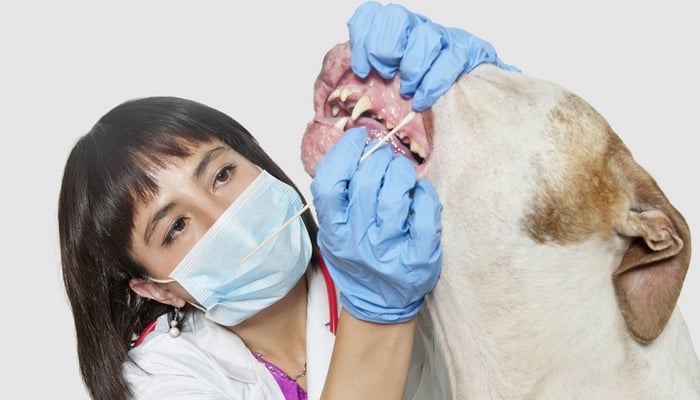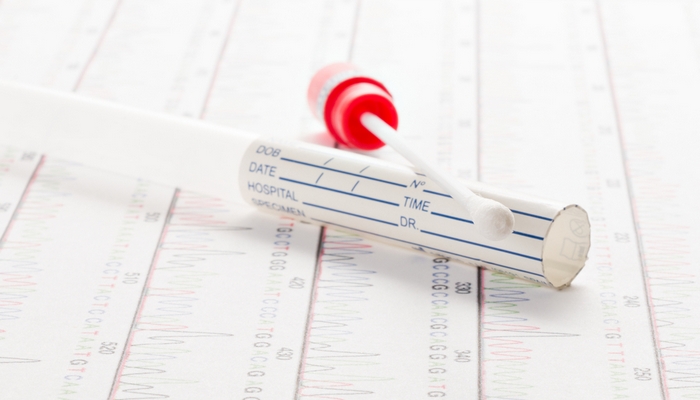There are many reasons why you might want a dog DNA test on your pet. They are gaining in popularity online and on television. Your veterinarian most likely offers it as a service, as does your local humane society.
There are a number of reasons why someone may want a DNA test for their dog. Most often, owners want to see what breeds make up their pet. Is their purebred Labrador really 100% Labrador? What breeds make up their mutt?
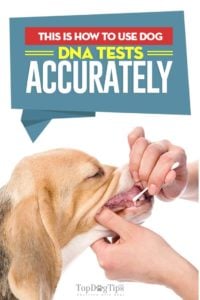 Knowing what breeds make up your dog is very beneficial for future planning. You can do research to find out what common health issues are most commonly seen in these breeds. It can also give you some insight into your dog's personality characteristics.
Knowing what breeds make up your dog is very beneficial for future planning. You can do research to find out what common health issues are most commonly seen in these breeds. It can also give you some insight into your dog's personality characteristics.
Dog DNA test results can give you a starting point. From there, you can research the breeds that make up your pet in order to answer questions like:
- Is he likely to be good with children?
- Is he more likely to be hyper or high strung?
- Is he going to be easy to train?
- Is he more likely to get certain types of cancer, and what symptoms should I be looking for?
- Is he more susceptible to allergies, diseases or certain infections (like ear and eye infections)?
DNA testing on dogs has become quite popular in recent years due to lowered costs, faster turn-around times and better results. DNA profiling is for genetic profiling only and does not provide information on a dog’s health, performance ability or coloring.
However, there is plenty of potential information in a DNA test that is useful to a dog owner like approximately how big a dog will get, and if a dog has a high percentage of bulldog, you know it may have a tendency to be stubborn.
How to Accurately Use Dog DNA Test
The Basics
Companies that specialize in doggie DNA testing are advertising their tests all across the internet. You have wondered for some time exactly what breed your rescue dog is, and now you have your chance.
These tests range from $60 and up, you can buy them online, at pet supply stores, or even through your veterinarian’s office. Most of these tests require you to take a cheek swab from your dog, while the more expensive tests require a blood test from your veterinarian.
Before you submit your sample, decide what it is you want to learn about your dog and educate yourself about each of the tests on the market. Depending on which company you choose to run the test, your results will be presented to you as a certificate or a report.
Why Your Mutt’s Breed Matters
Knowing your dog’s breed can make a huge difference in preventative treatment for potential health risks. For example, Boxers are known for getting cancers, and Dobermans can have bleeding disorders. Knowing these risks ahead of time can result in saved lives.
 It can finally resolve those family discussions over who is right and whether your dog is part German Shepard or Golden Retriever. Knowing the make-up of your dog’s breeds can make a difference when your vet determines what health issues your dog may be at risk for.
It can finally resolve those family discussions over who is right and whether your dog is part German Shepard or Golden Retriever. Knowing the make-up of your dog’s breeds can make a difference when your vet determines what health issues your dog may be at risk for.
It can give you some light on your dog’s aptitude and attitude. Knowing your dog’s breed may also help you determine whether or not he would be a good fit for apartment living or not.
It can give you the answers you need as to why your dog howls when you leave, and is so anxious when you go out. Knowing your breed and its tendencies can help you understand your dog more and possibly help with any type of behavioral issue you may currently be having.
RELATED: Top 5 Best Dog DNA Tests
What is the Best Time to Do A Dog DNA Test?
You may be wondering, now that you have decided to test your dog, what is the best time of day to test? There is no best time to test. Testing can actually be done any time of day. You are looking for accurate results and want to do this test only one time.
While there can be some interference with food on the test or watered-down test results, the idea is a clean swab test – so it makes perfectly good sense to wait till after dinner. A couple hours after your dog’s last food and water is the best time to get a good clean swab.
How to Swab Your Dog
Getting a good clean swab from your dog is important to getting an accurate DNA result. The kit that you have chosen should have directions on the label as to how they would prefer that you would collect the DNA.
You should follow the directions on the label for your particular kit. It should be at least 2 hours after your dog’s last meal, and your dog’s mouth should be clean and free of debris. You can hold a biscuit up over your dog’s head to get him drooling for you, just don’t give in and give the biscuit till after the testing is complete.
When performing a dog DNA test, you'll need to follow these steps:
1. Remove the Collection Tube
Go over the directions, and remove the collection tube. Get the swab ready and the tube ready and be prepared to swab your dog’s mouth.
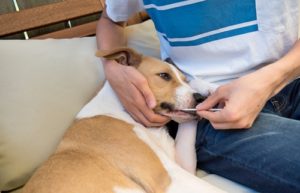 2. Swab Your Dog
2. Swab Your Dog
Open the swab package and be careful not to touch any of the bristles. Get a firm hold of your dog’s mouth and place the bristle inside the jaw. Swab the cheek firmly. Let go of your dog. Allow the sample to dry for 5 minutes by leaving to dry in a clean, isolated area.
3. Place in Tube and Seal
Take your dog’s sample and carefully place in the tube and seal the tube.
4. Mix & Activate
If your kit comes with liquid activator, follow the instructions. Place the sample in the tube of liquid, seal tightly, then shake to activate (EmbarkVet, 2017).
5. Mail
The sooner you mail off your sample the sooner you will get your results. Why wait?
RECOMMENDED REVIEW: Embark Dog DNA Testing Kit
Avoid Contamination
When you do the testing be prepared to follow through to the end. Place the swabs into the tubes as soon as they are dried. They only need 5 minutes to dry, and leaving them out longer can lead to contamination.
This can especially occur if there are multiple dogs in the home. Keeping an eye on your project – from start to finish – will lead to a complete, scientifically sound, DNA test.
It is not a problem that you have multiple dogs IN your home.
In order to have the most accurate test possible, you should not allow your dog to share food, water, or chew toys with other dogs for a minimum of two hours before testing.
Alleviate Worries (There’s Enough DNA)
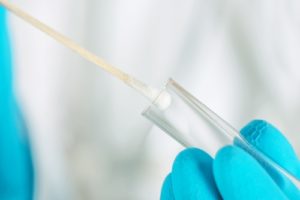 You can run through the test instructions a number of times and still wonder if you did everything right. You are watching the swab dry and there is nothing there. You begin to wonder if you should swab your dog’s cheek again just for good measure.
You can run through the test instructions a number of times and still wonder if you did everything right. You are watching the swab dry and there is nothing there. You begin to wonder if you should swab your dog’s cheek again just for good measure.
Before you start to worry, realize that you took the time to rub the inside of your dog’s cheek for a good 15 seconds or more, which meant that you more than likely collected enough epithelial cells for a good test. You can put your worries aside, there was more than enough DNA for a good test.
Understanding the Results
Depending on the type of dog DNA test that you chose for your DNA testing, you will get your results in the form of either a certificate or a report. Different companies report the results in a different manner.
Some companies will include a certificate of DNA breed analysis. On this certificate it will list three breed categories including: primary, secondary, and in the mix. Other companies may list your dog’s genetics in order of prevalence. This may also include information on the breed, including behavior, health, and personality summaries.
As companies add more breeds to their databases the accuracy of the dog DNA test has improved. It is recommended that you choose the test that best matches the type of outcome that you desire in terms of the final report, if you are looking for a certificate to hang on your wall, you should look for a company that is offering that type of certificate. In this way, you will not only get the answers that you seek, you will also get the results that you enjoy and can share with your friends.
READ NEXT: How the Study of Dog DNA Is Improving Our Understanding of Humans


